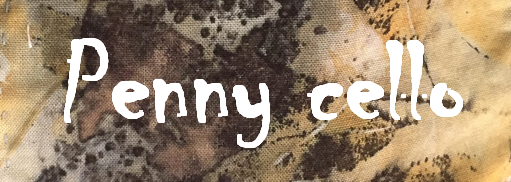Beach glass is a a fun medium to work in.
In Australia we mostly get browns, greens, light blues and whites: all of the different bottles of wine and beer that you can buy (and sometimes throw overboard when you go fishing 🐟).
During the war all kinds of things were also dumped in the ocean around us, including a lot of glass bottles. Occasionally you can find whole, tiny bottles washed up. Mostly it's broken glass though.
I pick it up off the beach, wash it but don't tumble to smooth it at all, and use the different pieces for different projects. Usually about a third of my haul is too sharp to use for jewellery, so I have made lamps and other things.
The most fun by far have been the dragons 🐉.
I've made a few dragon friends for people over the years, and one also inhabits a shelf in our bedroom.
Meet Sebastian!
I start with a skeleton: an outline of wire and "ribs" that the pieces of glass are wired onto. I use the odd edges of each piece to snag the wire, twisting it around several times until I was sure that it was caught.
All of my glass pieces pass a "shake" test before they leave me - you don't want things falling apart!
Like mosaic, the glass pieces don't fit together perfectly, so I wire beads between them to complete it. Some of the dragons, like Sebastian, have tongues inside mouths full of sharp teeth, and a spiky spine all the way down to their individual tails.
Sebastian's tail is a green and white glass pendant.
One dragon with a row of Chinese ceramic beads could even wrap his body around your shoulders. He had goofy eyes, so I named him Mingo .
A pair of lovely ladies bought him at a craft fair as a present for their eclectic friend. They came back to look at him three times! The dragons certainly catch your eye 👀
His tongue is a piece of Bamboo coral.
I think her spine started its life as an elven crown, but I like where it has ended up.
Then there was a dragon for my brother, though this one was made from beads rather than glass. I also used a broken wind chime: the long copper pieces that make up his legs. A packet of plastic Autumn leaves are his spine, and he has bone beads as eyes. This funky little guy still lives on the window sill in my brother's bedroom.
The dragon that took the longest though was the Leafy Sea Dragon for my mum. Packets and packets of beads and I still ran out! If you look too close at the beads towards the tail you can see where I filled it with what I had, rather than matching beads.
The colours worked well, as did all of the leafy bits coming off him.
Getting the stripes to line up was a challenge, but I was incredibly happy with the results. I put it together as a surprise... but got busted finishing it when mum came home early one day.
The last member of this odd family was called Motley.
Because that is exactly what he was. I had a collection of glass that had sharp edges - some lovely, clear pieces that you could never wear without cutting yourself. So I sat down one afternoon without much of a plan and started piecing him together.
His jaw is crooked and his colours are all over the place. I used leftover beads to fill his gaps, so he has a red and white belly, and pink bits, brown bits, blue bits too.
His eyes do match, but he has a funny little copper tail that looks a bit like a dragonfly. You can kind of see a sun on his right shoulder as well, which I had made for fun and decided to use to fill a gap on him. Almost like a tattoo. A blue and green flower covers part of his face too.
I had him on display at a market stall one day and to my surprise he sold. Someone fell in love with his motley little face and he found a new home.
I have a box of glass here at home. I think it's time I pulled it out and made another drake. Sebastian could do with a girlfriend.
Maybe brown, with the bottoms of beer bottles as his belly and the necks of bottles as his tail?
Or green, with shiny green beads and stringy, leafy bits coming off him.
I wonder what their names will be?































































